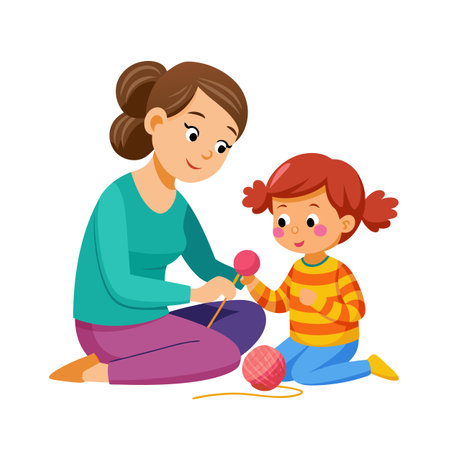1. Understanding Your Toddler’s Sleep Needs
Making sure your toddler gets enough sleep is one of the most important things you can do for their health and happiness. Toddlers are growing and learning fast, so their bodies and brains need plenty of rest. But how much sleep does your little one actually need? And why is creating a consistent sleep environment so important?
How Much Sleep Do Toddlers Need?
Every child is unique, but there are general guidelines that can help you know if your toddler is getting enough rest. The amount of sleep toddlers need changes as they grow. Here’s a simple table to help you see what’s typical:
| Age | Total Sleep Needed (24 hours) | Daytime Naps | Nighttime Sleep |
|---|---|---|---|
| 12–18 months | 13–14 hours | 1–2 naps (2–3 hours total) | 11–12 hours |
| 18–24 months | 12–14 hours | 1 nap (1–2 hours) | 11–12 hours |
| 2–3 years | 11–13 hours | 1 nap (1–2 hours) | 10–12 hours |
Why a Consistent Sleep Environment Matters
A predictable sleep space helps toddlers feel safe and secure. When their room looks, feels, and sounds the same every night, it sends a signal to their brain that it’s time to wind down. This routine helps them fall asleep faster and stay asleep longer. Good sleep is linked to better mood, learning, growth, and even immune health.
The Benefits of Routine and Comfort
- Easier Bedtimes: Familiar routines and surroundings make bedtime less stressful.
- Fewer Night Wakings: A cozy, quiet room helps toddlers sleep through the night.
- Healthy Development: Well-rested kids have more energy to play and learn.
Tip:
If you notice your toddler waking up often or having trouble falling asleep, look at both the amount of sleep they’re getting and the setup of their room. Small changes can make a big difference in helping your child get the rest they need.
2. Choosing the Right Bed and Bedding
Pros and Cons of Toddler Beds
Toddler beds are designed just for little ones who have outgrown their cribs but aren’t quite ready for a twin or full-size bed. Here’s a quick look at the benefits and drawbacks:
| Toddler Bed Pros | Toddler Bed Cons |
|---|---|
| Low to the ground—easy for toddlers to climb in and out | May be outgrown quickly (usually by age 5) |
| Comes with guardrails for safety | Requires buying special toddler-sized bedding |
| Fun themes available (cars, princesses, etc.) | Might not be as sturdy as bigger beds |
| Fits standard crib mattress—no need to buy a new one right away | Extra furniture expense if skipping straight to a twin or full-size bed later on |
Transitioning from Crib to Bed: What Parents Should Know
The switch from crib to bed is a big milestone. In the U.S., many parents make this transition between ages 18 months and 3 years. Here are some tips for making it smoother:
- Safety first: Look for beds with built-in guardrails to prevent falls.
- Keep routines consistent: Stick with your usual bedtime rituals so your toddler feels secure.
- Childproof the room: Once your child can get in and out of bed on their own, make sure furniture is anchored, cords are out of reach, and outlets are covered.
- Let your toddler help choose: Giving them some say in picking sheets or pillows can help make the new bed exciting rather than scary.
Selecting Comfortable and Safe Bedding
Bedding matters for both comfort and safety. Here’s what U.S. families should keep in mind:
| Bedding Item | What to Look For | U.S. Safety Tips |
|---|---|---|
| Pillow | Toddler-sized, firm but not too hard, hypoallergenic if possible | No pillows under 2 years old; avoid adult-sized pillows for young kids |
| Sheets & Blankets | Cotton or bamboo for breathability; fitted crib/toddler bed sheets only; lightweight blankets if needed | Avoid heavy quilts or comforters with infants and young toddlers; use sleep sacks for younger children instead of loose blankets when possible |
| Mattress Protector | Waterproof, easy to wash, fits snugly over mattress without bunching up | No plastic covers that crinkle or slip; always ensure a tight fit with no loose fabric or corners sticking up |
Bedding Dos and Donts for Toddlers in America
- Do: Choose flame-retardant bedding made specifically for children.
- Do: Wash all bedding in gentle detergent before first use.
- Don’t: Use decorative pillows, stuffed animals, or heavy blankets while your toddler is sleeping.
A Quick Checklist for Bedding Safety
- No loose bedding or toys in the bed at night
- Bedding fits tightly around mattress corners
- Bedding materials are soft, breathable, and free from irritating chemicals
Your choices in beds and bedding can help your toddler feel safe, comfortable, and ready for restful sleep every night.

3. Optimal Room Temperature and Lighting
Setting the Ideal Room Temperature
Keeping your toddler comfortable throughout the night starts with the right room temperature. Most pediatricians in the U.S. recommend keeping your child’s room between 68°F and 72°F (20°C-22°C). This range helps prevent overheating while making sure your little one is cozy, especially during different seasons.
| Season | Recommended Temperature | Tips |
|---|---|---|
| Winter | 68°F-70°F (20°C-21°C) | Use a sleep sack or wearable blanket; avoid heavy bedding |
| Summer | 70°F-72°F (21°C-22°C) | Use a fan for air circulation; dress your toddler in light pajamas |
The Benefits of Blackout Curtains
Blackout curtains are popular in many American homes because they block outside light from street lamps, cars, and early morning sun. They help create a dark, calming environment that encourages better sleep. If your toddler wakes up too early or has trouble napping during the day, blackout curtains can make a big difference by signaling it’s time to rest.
Choosing and Installing Blackout Curtains
- Select curtains that fit snugly over windows to prevent light leaks
- Look for products labeled “blackout” rather than “room darkening” for maximum effect
- If you’re renting or want something temporary, try removable blackout window shades
Introducing Appropriate Nightlights
A soft nightlight can comfort toddlers who may be afraid of the dark or need to get up at night for potty trips. In American homes, many parents choose plug-in LED nightlights with sensors that turn on automatically when it gets dark. The key is to keep lighting dim and soothing—look for warm, amber-toned lights instead of bright white or blue hues.
| Nightlight Type | Best For | Notes |
|---|---|---|
| Plug-in LED Nightlight | General use, automatic on/off features | Energy efficient, long-lasting, safe for kids’ rooms |
| Portable Nightlight Toy | Toddlers who like to hold their nightlight or take it to the bathroom | BPA-free materials recommended; ensure it’s easy to clean and not too bright |
| Wall Projector Nightlight | Toddlers who enjoy gentle patterns or stars on the ceiling as they fall asleep | Avoid overly stimulating designs; stick with calming colors like blue or green (but not too intense) |
4. Minimizing Distractions and Noise
Tips for Reducing Noise in Your Toddlers Room
Keeping your toddlers sleep environment quiet can make a big difference in how well they rest. Here are some easy ways to cut down on noise:
- White Noise Machines: A white noise machine or fan can mask household sounds like TVs, talking, or street noise.
- Soft Rugs and Curtains: Adding plush rugs and thick curtains helps absorb sound and keeps the room quieter.
- Close Doors: Keep the bedroom door closed during naps and bedtime to block out noise from the rest of the house.
- Move Noisy Toys Out: Store noisy or electronic toys in another room during sleep times.
Decluttering Toys for a Calmer Space
A tidy room helps your toddler wind down and focus on sleep, not play. Try these decluttering ideas:
| Toy Type | Where to Store |
|---|---|
| Noisy/Electronic Toys | Closet or another room during sleep hours |
| Favorite Stuffed Animal | One or two in bed for comfort |
| Puzzles & Books | Shelf away from crib/bedside |
| Building Blocks & Cars | Baskets or bins with lids, tucked away at night |
Creating a Calm and Focused Sleep Environment
- Keep Decor Simple: Too many colors or busy patterns can be distracting. Choose soothing colors like soft blues, greens, or grays.
- Limit Wall Art: Pick one or two calming pictures instead of a crowded gallery wall.
- Soft Lighting: Use a small nightlight if needed, but avoid bright overhead lights at bedtime.
- Scent Matters: Consider a lavender-scented diffuser (out of reach) to help promote relaxation.
- Avoid Screens: Remove tablets, TVs, and other screens from the bedroom to encourage better sleep habits.
With these simple changes, you can turn your toddler’s room into a peaceful place that encourages restful sleep every night.
5. Personalizing the Space for Comfort and Safety
Creating a sleep-friendly environment for your toddler means making their room feel both cozy and safe. Here are some practical ways to personalize their space so it’s inviting and secure, reflecting what works best in American homes.
Making the Room Cozy
Your toddler’s bedroom should be a place where they feel comfortable and relaxed. Adding personal touches can help them settle down for bedtime with ease. Consider these ideas:
| Cozy Touch | How It Helps |
|---|---|
| Favorite Stuffed Animals or Blankets | Offers comfort and a sense of security, especially if your child is transitioning from a crib to a bed. |
| Soft Nightlight | Helps ease fears of the dark and makes nighttime trips to the bathroom safer. |
| Personalized Bedding | Letting your toddler pick out sheets with their favorite colors or characters makes the bed more inviting. |
| Bookshelf with Bedtime Stories | Encourages a soothing bedtime routine and gives the room a homey feel. |
Ensuring Safety in Every Corner
A cozy space should also be safe. Toddlers love to explore, so it’s important to safety-proof common hazards in the room. Here are some tips:
- Secure Furniture: Anchor dressers, bookshelves, and TVs to the wall to prevent tipping accidents.
- Cord Management: Use cord shorteners or covers for blinds and electronics to keep cords out of reach.
- Outlet Covers: Place covers on unused electrical outlets to prevent shocks.
- No Small Objects: Remove toys or items small enough to be swallowed or cause choking.
- Window Locks: Install window guards or locks so windows can’t be opened wide by curious hands.
- Rug Grips: Add non-slip pads under rugs to prevent slips and falls.
Toddler Room Safety Checklist
| Safety Feature | Status (Check/To Do) |
|---|---|
| Furniture anchored to wall | |
| Cords secured or covered | |
| Outlet covers in place | |
| No small or sharp objects accessible | |
| Window locks installed | |
| Non-slip rug grips added |
Create a Balanced Environment
The key is balancing comfort with safety. By including your child’s favorite things while protecting them from hazards, you create an environment where they’ll feel both happy and secure every night.


